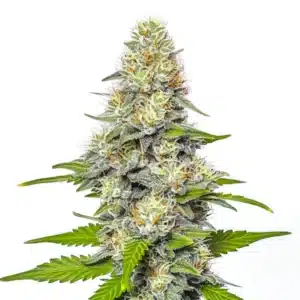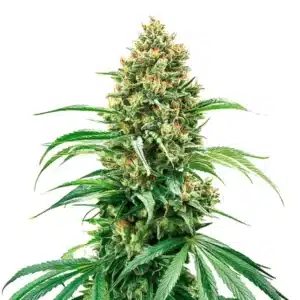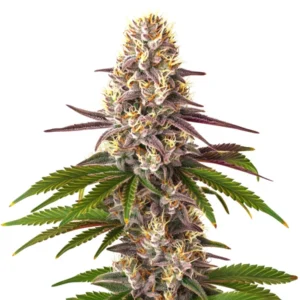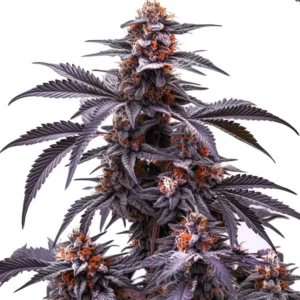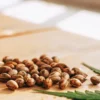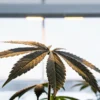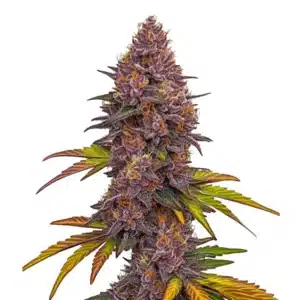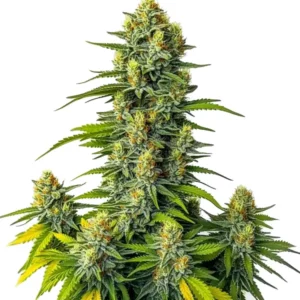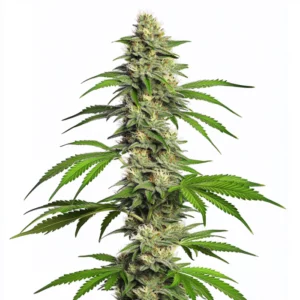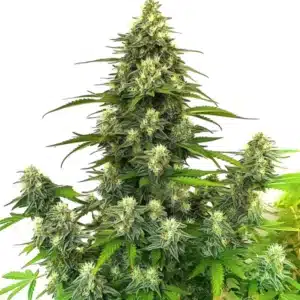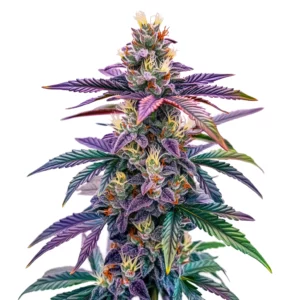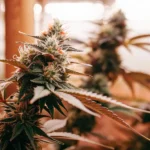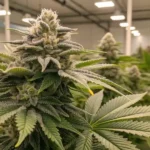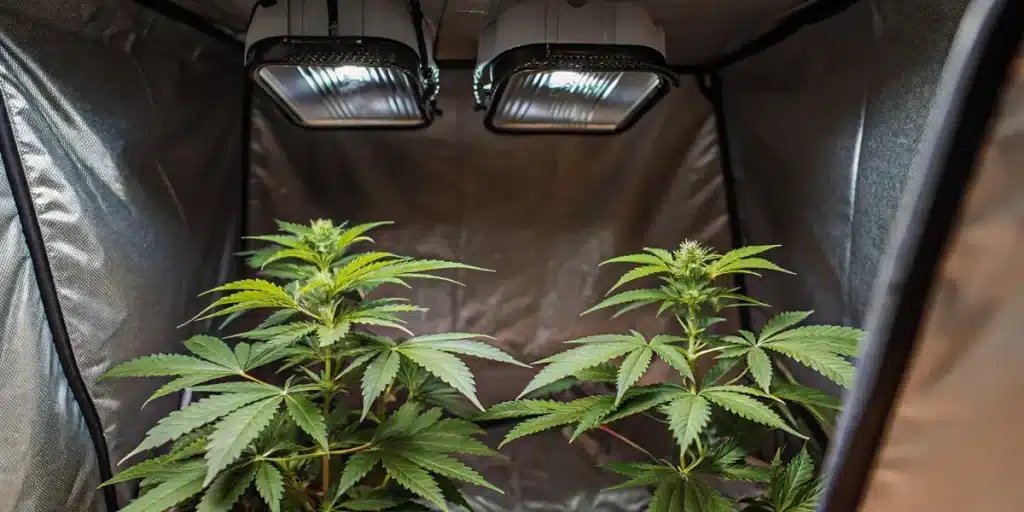
Best Temp And Humidity For Autoflowers
The best temp and humidity for autoflowers represent critical variables for growers to oversee throughout every stage of the growth cycle for autoflowering cannabis plants. Maintaining the best temp and humidity for autoflowers, with careful management in each respective growth phase, can result in increased yields and larger plants, while also fostering overall plant well-being. As elaborated below, humidity levels should be closely monitored and adjusted throughout the indoor cultivation process. With the investment in a quality humidifier, achieving this balance becomes easily attainable.
This article offers an overview of the optimal humidity and temperature ranges for each stage of the growth cycle, furnishing indoor growers with a comprehensive guide to enhance plant health and ensure satisfactory yields from their autoflowering cannabis plants.
Recommended Strains
Jack Herer x White Widow Auto
|
|
THC | 20% - 24% (Medium) |
|
|
Type | Autoflowering |
|
|
Yield | High |
|
|
Phenotype | 40% Indica / 60% Sativa |
Gorilla x White Widow
|
|
THC | 20% - 25% (Medium) |
|
|
Type | Feminized |
|
|
Yield | Medium |
|
|
Phenotype | 80% Indica / 20% Sativa |
What is the ideal temperature and humidity for Autoflowers?
Temperature and humidity play crucial roles in the development of autoflowering cannabis plants, highlighting the importance of autoflower temp and humidity. It’s recommended to maintain temperatures within the range of 20-30°C (68-86°F) during daylight hours and around 18-20°C (64-68°F) at night. Additionally, humidity levels should be kept between 40-60% during the vegetative phase and 50-60% throughout the flowering period to optimize growth.
Promos & Deals
Tackling Autoflowering Cannabis: Is 30 Degrees Celsius Too Hot?
It’s essential to know how temperature affects plant growth. When temperatures rise above 86°F (30°C), plants begin to experience heat stress, which significantly slows down their growth rate.
Mastering Autoflower Plant Growth: Optimizing Light Intensity for Maximum Yield
The photoperiod for autoflowers typically exceeds that of photoperiod plants, often spanning around 20 hours under grow lights. Due to the limited light absorption capacity of plants in a day, it’s advisable to maintain a lower average PAR intensity for autoflowers. The recommended PAR intensity range is between 500 and 600 µmols/m²/sec. In addition to light, understanding the Best Temp And Humidity For Autoflowers is crucial for optimizing growth and preventing stress during their fast-paced life cycle.
Tricks To Lower The Temperature In A Grow Room
To optimize the environment in your grow room, particularly when learning how to grow autoflower in a grow tent, it is essential to increase airflow from the outside by increasing the speed of the exhaust fan or opening the ventilation flaps on your grow tent. Additionally, installing a temperature-controlled fan allows you to precisely maintain optimal temperature levels. Managing the temp and humidity for autoflower seedlings during this stage is crucial for healthy growth. Furthermore, if the outside temperatures are too high, the use of an air conditioner is an effective solution to regulate the climate within the growing space.
Besides to these measures, it is essential to reduce heat generation in the grow room, either by moving heat-generating equipment outside or by reducing the intensity of the lights. Likewise, taking advantage of the night to operate the lights allows you to benefit from the cooler temperatures outside, thus contributing to a more favorable environment for growing. With these combined strategies, you can ensure an optimal environment for the growth of your plants, maximizing their health and performance.
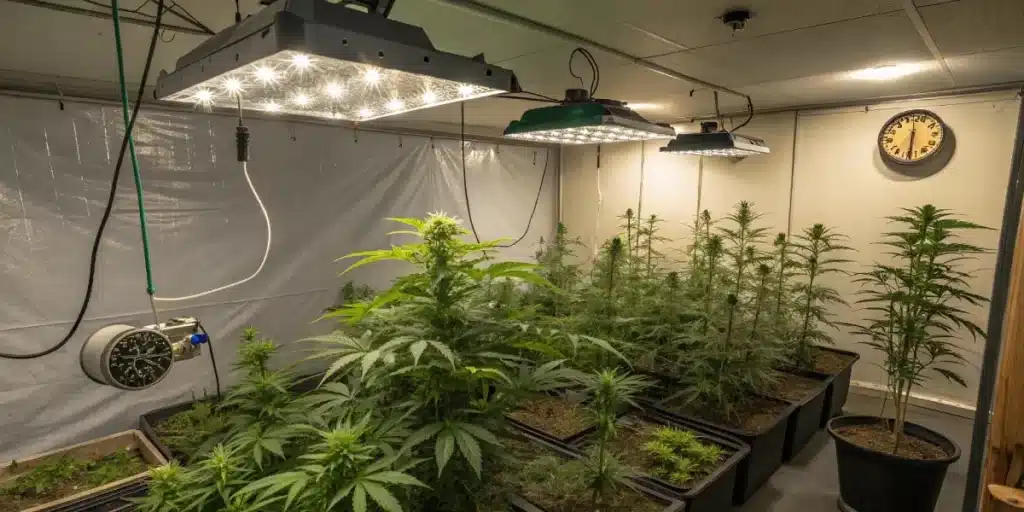
Mastering Grow Room Temperature Control: Expert Tips for Optimization
To optimize the performance of your growing space, it is crucial to implement effective strategies that maintain optimal environmental conditions. A key tactic is to reduce outside air entering the grow room, which can be achieved by decreasing the speed or size of the exhaust fan, or by closing and restricting the ventilation fins on your grow tent. Additionally, using a heater in conjunction with a thermostat allows you to maintain precise temperature control, ensuring an environment conducive to plant growth.
Additionally, to maximize the thermal efficiency of your growing space, it is essential to properly insulate the area. This will help retain the heat generated by the lights within the grow room, creating a more stable and favorable environment for the plants. By minimizing heat losses, energy use is optimized, and ideal conditions are provided for the healthy development of your crops throughout the growth cycle.
Why is humidity important in cannabis cultivation?
Throughout all stages of cannabis cultivation, your plants will consistently require water intake, with the quantity varying according to the humidity levels within your growing environment. When humidity levels are elevated, cannabis plants utilize their leaves to absorb moisture from the atmosphere, reducing their reliance on water uptake through the roots. Conversely, lower humidity prompts increased water absorption through the roots.
Given that humidity influences plant water consumption and the nutrient content of the water you provide, maintaining control over humidity levels enhances your ability to manage your plants’ nutrient uptake.
However, humidity regulation serves more than just a preventative purpose. Maintaining optimal humidity fosters robust, flourishing plants with abundant foliage growth. Indeed, during the vegetative phase, cultivating with DWC (Deep Water Culture) / Bubbleponics in conjunction with appropriate humidity levels can lead to challenges in managing excessive plant growth.
Furthermore, during the flowering stage as your plants begin to develop buds and approach harvest, adjusting humidity levels in your growing space can stimulate increased resin production (containing THC and other cannabinoids) while safeguarding against mold infestation. High humidity can potentially trigger mold or bud rot, posing a significant threat to the development of dense, resinous colas, which are highly prized by growers.
The optimal humidity for the plant in the vegetative stage.
Young cannabis plants in their vegetative stage experience rapid leaf growth in optimal growing conditions, sometimes surpassing root development. However, roots are not the sole source of water for plants. Leaves have the ability to extract water vapor from the air, with higher humidity facilitating greater water absorption. Insufficient humidity can impede growth until roots are fully established. The goal is to create a warm environment reminiscent of spring or summer.
Warning Signs:
Avoid using a humidity dome for seedlings unless you reside in a particularly dry area, as autoflower seedling humidity must mimic spring-like conditions, although it’s easy to overdo it with seedlings compared to clones, which thrive in high humidity.
Excessive humidity is indicated if plants develop wet patches on their leaves, even when not in contact with each other. As seedlings mature into young plants, aim for a humidity level of around 50% RH.
A drop in humidity below 25% can hinder growth and lead to nutrient deficiencies, particularly affecting young seedlings. While some seedlings may tolerate low humidity, others are more sensitive to these conditions.
Best humidity for cannabis plant in flowering
It’s ideal to reduce the relative humidity of your cultivation space to approximately 40-50% when transitioning into the flowering phase. Some growers opt to further decrease humidity to below 40% as harvest approaches, aiming to stimulate increased resin production in cannabis buds. However, this method can significantly stress plants and should be approached cautiously, incrementally adjusting humidity levels to gauge plant response before subjecting them to extreme conditions.
By the onset of the flowering phase, cannabis plants typically develop a robust root system to meet their water requirements. Although they can still absorb water through their foliage, maintaining lower humidity levels than during the vegetative stage helps mitigate the risk of mold and mildew formation.
Mold poses a particular threat during flowering, potentially developing on or within buds without immediate detection. If mold is discovered in any buds or if buds show signs of internal rot, it’s crucial to promptly discard affected buds to prevent compromising the entire harvest. In case of widespread mold issues and inability to reduce humidity, early harvest may be the most prudent course of action to mitigate further bud rot.
Even in low humidity conditions, ensuring adequate airflow around plants remains essential. Employing small fans to circulate air over and beneath the plant canopy helps prevent the accumulation of moisture and minimizes the risk of mold development.
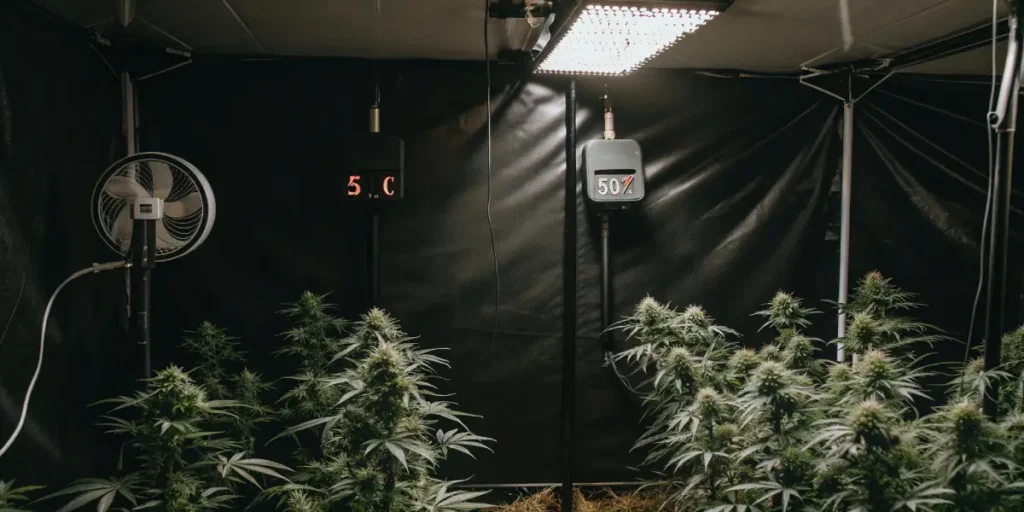
Boosting resin production
In the final 2–3 weeks before harvest, some growers utilize dehumidifiers to maintain humidity levels between 40–45% in their cultivation space. This range often aligns with the ideal temp and humidity for autoflowers, helping to safeguard against bud rot during the closing stages. It may also induce a mild stress response that can enhance resin production. While scientific evidence supporting this technique’s efficacy is limited, it remains popular among growers who report positive results. However, caution is advised—excessive humidity reduction can be harmful, although certain strains may tolerate or even benefit from these conditions.
Control the humidity: Step by Step
Step 1: Utilize a Humidity & Temperature Monitor for Precise Adjustments
Investing in a reliable device like the Ambient Weather WS-07 Wireless Thermo-Hygrometer can greatly assist in maintaining optimal growing conditions. This tool allows you to conveniently monitor temperature and humidity levels from a distance, offering insights into necessary adjustments. Remember to stock up on 6 AAA batteries for uninterrupted monitoring.
Step 2: Consult the Reference Chart
Achieving ideal temperature ranges of 70-80 °F (21-27 °C) during the day (lights on) and a slightly cooler environment of 5-10 degrees at night (lights off) is crucial for plant growth.
Refer to the following guidelines to ensure that relative humidity remains within the optimal range:
For Young Plants (Seedling to End of Vegetation):
Maintain a relative humidity (RH) of 40-60%. If you observe wet spots forming on leaves, it indicates excessive humidity, necessitating improved air circulation to prevent issues such as white powdery mold.
For Flowering Plants (Budding Stage):
Keep relative humidity levels between 40-50% to mitigate the risk of mold. A slightly lower humidity towards the end of the flowering phase can potentially enhance resin production as plants approach harvest.
Step 3 – Adjusting Excessive Humidity and Temperature
Achieving optimal conditions for indoor cultivation involves addressing issues of excessive heat and humidity, which commonly plague growers. This challenge often arises due to the intense heat generated by grow lights and the typically confined spaces in which cannabis cultivation occurs, driven by concerns for discretion or privacy.
The relative humidity levels in your cultivation space are primarily influenced by your geographical location and the design of your growing environment. Many growers encounter difficulties in reducing humidity levels, as the density of foliage and vegetation in compact grow spaces tends to elevate humidity. Addressing common cannabis cultivation issues related to heat and humidity requires strategic measures.
Regulate humidity when it is very high or too low.
Dehumidifiers effectively extract moisture from the air within confined spaces such as grow rooms or tents. A high-quality unit can be conveniently connected to a drain, particularly beneficial in highly humid regions like the UK and other similarly moist climates. Otherwise, dehumidifiers will cease operation automatically once they reach capacity, requiring manual emptying of the accumulated water extracted from the air.
Now, if you want to increase the humidity in the grow room, humidifiers are perfect because they increase the humidity levels of the air, the evaporative type being recommended, since it also helps to cool temperatures. It is essential to select a humidifier with a large tank that holds at least 6 gallons of water, as smaller ones with 1.5-gallon tanks typically require frequent refills throughout the day.
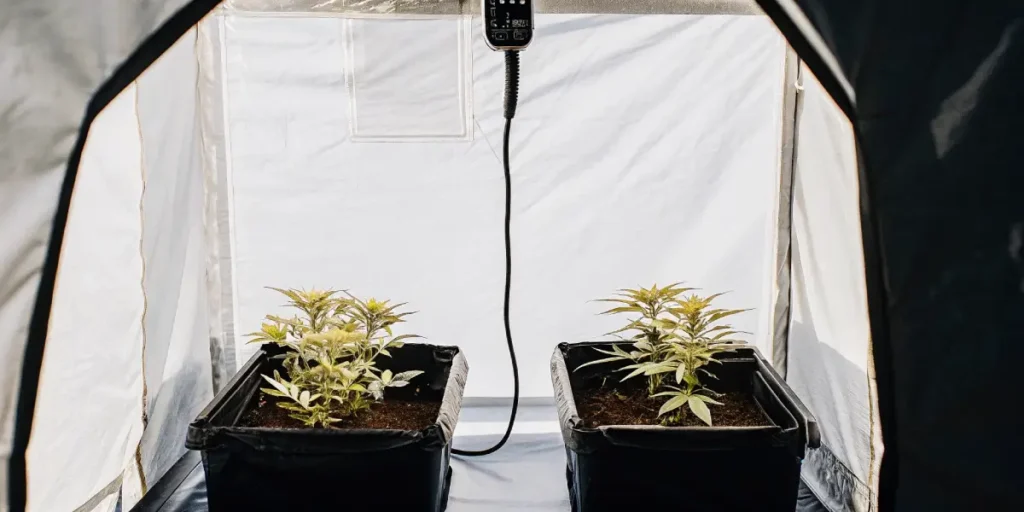
Do-Si-Dos Auto
Do-Si-Dos Automatic boasts stunning buds adorned with vibrant orange pistils and frosty trichomes. Originating from the esteemed parent strains Do-Si-Dos and Cookies Auto, it inherits robust genetics, delightful terpenes, and a substantial THC potency of 20%. Just a few inhales are ample to experience the calming and soothing euphoria enveloping the body. Ideal for consumption during leisurely afternoons or evenings, it offers a reprieve from worldly concerns, inducing a state of tranquility.
Even in cold climates, Do-Si-Dos Automatic thrives, defying adverse conditions to produce a lush canopy of flowers. While this strain may take a bit longer to mature compared to others, typically requiring 9–10 weeks post-germination for harvesting and drying, its extended life cycle is compensated by a bountiful yield ranging between 100–150g/plant.
Big Jack White Widow Auto
Cultivating Big Jack White Widow Auto seeds promise to yield a remarkable cannabis plant boasting a THC content of 20% – 23% and low CBD levels. Derived from a lineage of White Widow, Jack Herer, and ruderalis, this strain leans towards Hybrid dominance. Its adaptability to temperate climates, especially those with high humidity, makes it an ideal choice for cultivation. Employing methods such as SOG and SCROG is recommended for optimal growth.
Ideal for growers with beginner-level experience, Big Jack White Widow Auto exhibits high resistance to mold, with a flowering period averaging between 77 to 91 days (11 to 13 weeks). When cultivated indoors, this strain typically reaches heights ranging from 80 cm to 150 cm, producing yields of up to 1.96 oz/ft². Outdoors, plant heights vary between 100 cm and 180 cm, yielding approximately 4.23 – 8.46 oz/plant. To optimize indoor or outdoor cultivation, especially in varying climates, many growers refer to an autoflower humidity chart to ensure the ideal moisture levels throughout each stage. The resulting cannabis offers a flavor profile characterized by earthy, herbal, and sweet notes. Consuming Big Jack White Widow Auto often induces a sense of relaxation and sleepiness, according to many users.
Neville Haze Auto
This Blimburn Seeds variety stems from a cross between a Northern Lights #5 per Haze and a Ruderalis to attain Auto genetic makeup. It grows vigorously and tall, typical of a good Sativa, reaching up to a meter and a half in height. It develops some branches in the lower part of the plant, which separate from the stem, thus allowing light penetration all the way down.
You’ll have a central bud, perfectly formed, from the plant’s base to its tip. Robust, wide, and compact, it’ll be fully crystallized in about 10-11 week from germination. The effects of Neville Haze Auto are serene, active, and uplifting; you’ll enjoy this variety. Its flavor is distinctly incense-like with a sweet touch contributed by the Northern Light.
Neville Haze Auto stands out for its resistance to humidity, which makes it ideal for humid climates. Its rapid flowering, being autoflowering, is beneficial in prolonged rainy seasons, while its adaptability to different temperatures makes it versatile for various environments. Although it can grow tall, its manageable size is advantageous in humid climates, reducing the risk of fungal diseases due to excess vegetation.
FAQs of Best Temp And Humidity For Autoflowers
What are the best temp and humidity for autoflowers during each growth stage?
The best temp and humidity for autoflowers vary by stage. During the seedling and vegetative phases, aim for temperatures between 70–80°F (21–27°C) and humidity levels of 50–70%. As the plant enters flowering, reduce humidity to 40–50% and keep temperatures stable to prevent mold and enhance resin production. Lower humidity toward harvest can boost bud quality, but it should be done gradually to avoid stress.
How can I manage temperature and humidity for autoflowers in a grow tent?
To maintain the best temp and humidity for autoflowers in a grow tent, use tools like a humidifier, dehumidifier, exhaust fans, and temperature-controlled fans. Proper airflow, insulation, and light management also play key roles. Running lights during cooler nighttime hours and adjusting ventilation can help balance the climate effectively.
Why is controlling humidity so important when growing autoflowers?
Controlling humidity is essential because it affects nutrient uptake, plant transpiration, and resistance to mold. The best temp and humidity for autoflowers promote healthy development and maximize yields. High humidity during flowering can cause bud rot, while low humidity during early stages can stunt growth. Striking the right balance ensures vigorous, resin-rich plants.



